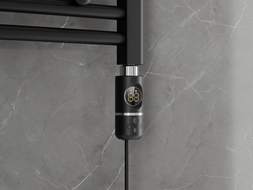
Many homeowners face a significant problem - they have small bathrooms where it is difficult to allocate even a bit of space for a freestanding bathtub. In the case of such small, modest bathrooms, a corner bathtub or a rectangular bathtub seems to be the right choice. This solution allows for increasing the surface area of the bathtub while not taking up much space in the bathroom. Corner bathtubs with mounted handles and seats increase comfort and safety during bathing, while rectangular ones are very versatile. Let's consider in this article how to install and connect a rectangular bathtub.
How to install the bathtub?
To begin connecting a rectangular bathtub, a few tools and plumbing elements will be needed, such as a level, drainage installation, a flat wrench, a drill-screwdriver, as well as elements already attached to the bathtub, such as a panel, rails, feet, and all elements required for mounting to the wall.
- The first step is to screw on the feet of the rectangular bathtub. It should be turned over, laid gently on a material that will protect it from scratching.
- Next, the special rails should be installed. Fortunately, all required screws and bolts should be included in the set. The feet attached to the rails will form a solid base for the structure. It is worth remembering to tighten the feet to the edges of the rails. This way, the spacing will be wider, which will affect stability.
- The next step is to install the drainage-overflow system. The siphon part should be located at the bottom of the bathtub, while the overflow part - on the side.
- At this point, it's worth tightening all hoses and pipes so that their lengths match the set. One should not forget about the seals, which also should be included in the set.
- The next step is to mount the handles. Users often unnecessarily skip this stage, putting the bathtub at risk of losing stability.
- The handles should be firmly attached to the wall to help the bathtub adhere to the side surfaces.
- At this stage, it is necessary to check the level of the bathtub, for which a level will be useful. If adjustments are needed, the height of individual sides can be adjusted using the feet to achieve the desired level.
- In the case of the shorter side, only 1 handle is sufficient, while for the longer side, at least 2 handles will be necessary.
Bathtub installation - bathtub casing
The next step is to install the bathtub casing. However, before this activity, it should be ensured that the drainage is properly connected. The bathtub casing should be mounted using previously noted mounting plates or brackets. Which option will be available depends on the solution chosen by the manufacturer. Plates are much easier to install. It is enough to screw the brackets in the appropriate places, and then overlay the bathtub casing. The upper edge of the plate should fit into the brackets located on the bathtub, and the lower part of the plate - into the mountings located on the substrate.
The next step is to seal the bathtub casing. Ultimately, silicone is recommended. Even the smallest gaps must be sealed so that the entire bathtub casing does not allow water to seep through. It is worth paying attention to the silicone that is chosen. Unfortunately, some of them react with acrylic. The solution will be sanitary silicone, which will not react in such a way. Throughout the entire process of installing the rectangular bathtub, a protective film should be on its surface and the surface of each of its elements - it should be removed only after the installation to avoid any scratches; however, at the moment of sealing, the film should already be removed.
Construction of a rectangular bathtub frame
If the bathtub enclosure will be covered with tiles, a solid frame and base made of plasterboard should be made. This solution is most often used in the case of rectangular and simple corner bathtubs. If their edges are too bent, it may turn out to be too time-consuming. In such a case, it is best to rely on the ready enclosure provided by the manufacturer.
When planning the height of the frame, it is worth considering not only the height of the bathtub but also the overhang of the edge relative to the tub. Typically, the edge has a height of 3 cm. Considering this, the frame should be 3 cm shorter. To be sufficiently solid, it should have a thickness of 5.5 cm, while the single-layer boards covering it should be 6.5 cm. The frame of the frame can be easily obtained using one UD section. It is enough to properly tighten the bends and mount the frame using screws. Such a solid frame can be mounted to the wall. It will provide a solid and durable support for the enclosure of both corner and rectangular bathtubs.



















